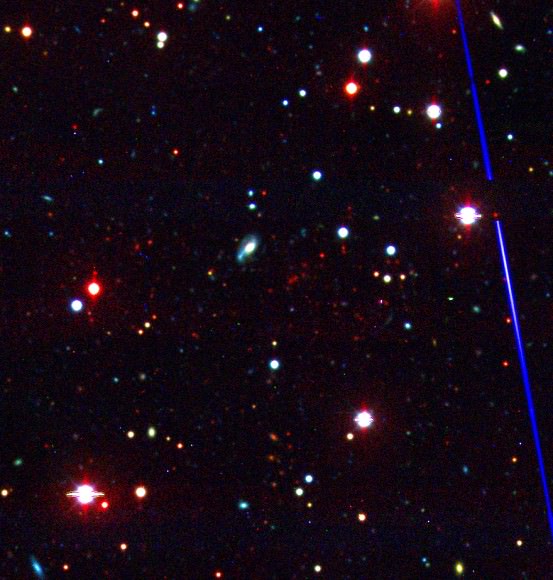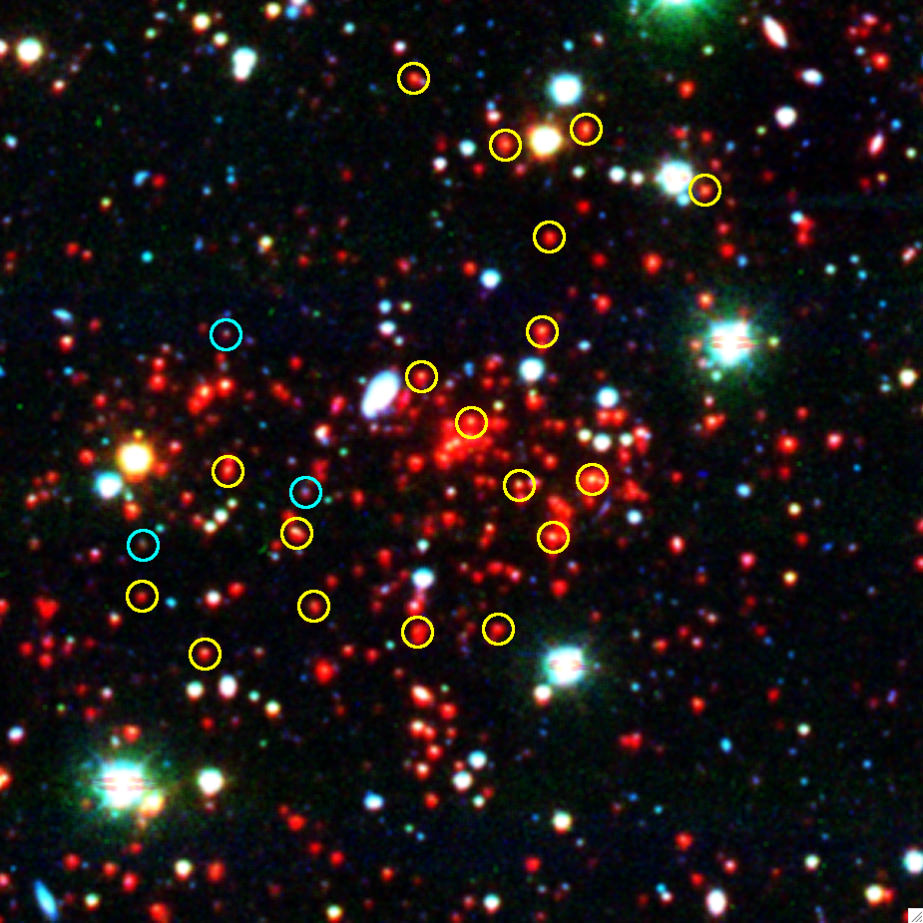[/caption]
Looking back to when our Universe was about half the age it is now, astronomers have discovered the most massive galaxy cluster yet seen at so great a distance. The researchers say that if we could see it as it appears today, it would be one of the most massive galaxy clusters in the universe. The cluster, modestly named SPT-CL J0546-5345, weighs in at around 800 trillion Suns, and holds hundreds of galaxies. “This galaxy cluster wins the heavyweight title,”said Mark Brodwin, from the Harvard-Smithsonian Center for Astrophysics. “This cluster is full of ‘old’ galaxies, meaning that it had to come together very early in the universe’s history – within the first two billion years.”
Using the new South Pole Telescope, Brodwin and his colleagues are searching for giant galaxy clusters using the Sunyaev-Zel’dovich effect – a small distortion of the cosmic microwave background, a pervasive all-sky glow left over from the Big Bang. Such distortions are created as background radiation passes through a large galaxy cluster.
They found the heavyweight cluster in some of their first observations with the new telescope.
Located in the southern constellation Pictor (the Painter), the cluster has a redshift of z=1.07, putting it at a distance of about 7 billion light-years, meaning we see it as it appeared 7 billion years ago, when the universe was half as old as now and our solar system didn’t exist yet.
Even at that young age, the cluster was almost as massive as the nearby Coma cluster. Since then, it should have grown about four times larger.

Galaxy clusters like this can be used to study how dark matter and dark energy influenced the growth of cosmic structures. Long ago, the universe was smaller and more compact, so gravity had a greater influence. It was easier for galaxy clusters to grow, especially in areas that already were denser than their surroundings.
“You could say that the rich get richer, and the dense get denser,” quipped Harvard astronomer Robert Kirshner, commenting on the study.
As the universe expanded at an accelerating rate due to dark energy, it grew more diffuse. Dark energy now dominates over the pull of gravity and chokes off the formation of new galaxy clusters.
The main goal of the SPT survey is to find a large sample of massive galaxy clusters in order to measure the equation of state of the dark energy, which characterizes cosmic inflation and the accelerated expansion of the universe. Additional goals include understanding the evolution of hot gas within galaxy clusters, studying the evolution of massive galaxies in clusters, and identifying distant, gravitationally lensed, rapidly star-forming galaxies.
The team expects to find many more giant galaxy clusters lurking in the distance once the South Pole Telescope survey is completed.
Follow-up observations on the cluster were done using the Infrared Array Camera on the Spitzer Space Telescope and the Magellan telescopes in Chile. A paper announcing the discovery has been published in the Astrophysical Journal.
The team’s paper is available at arXiv.
For more information on the South Pole Telescope, see this link.
Source: Harvard Smithsonian Center for Astrophysics


On this scale galaxy clusters give way to domain walls and large filaments. This might represent the upper bound on the scale for what we define as a galaxy cluster.
LC
WOW! 7 billion years ago… How evolved are those galaxies? Can’t wait to see the details with the James Webb!
OK, so where is that cluster now? Has the expansion of the universe “spread it out”? Or has it become a scaffolding filament structure as LC hinted?